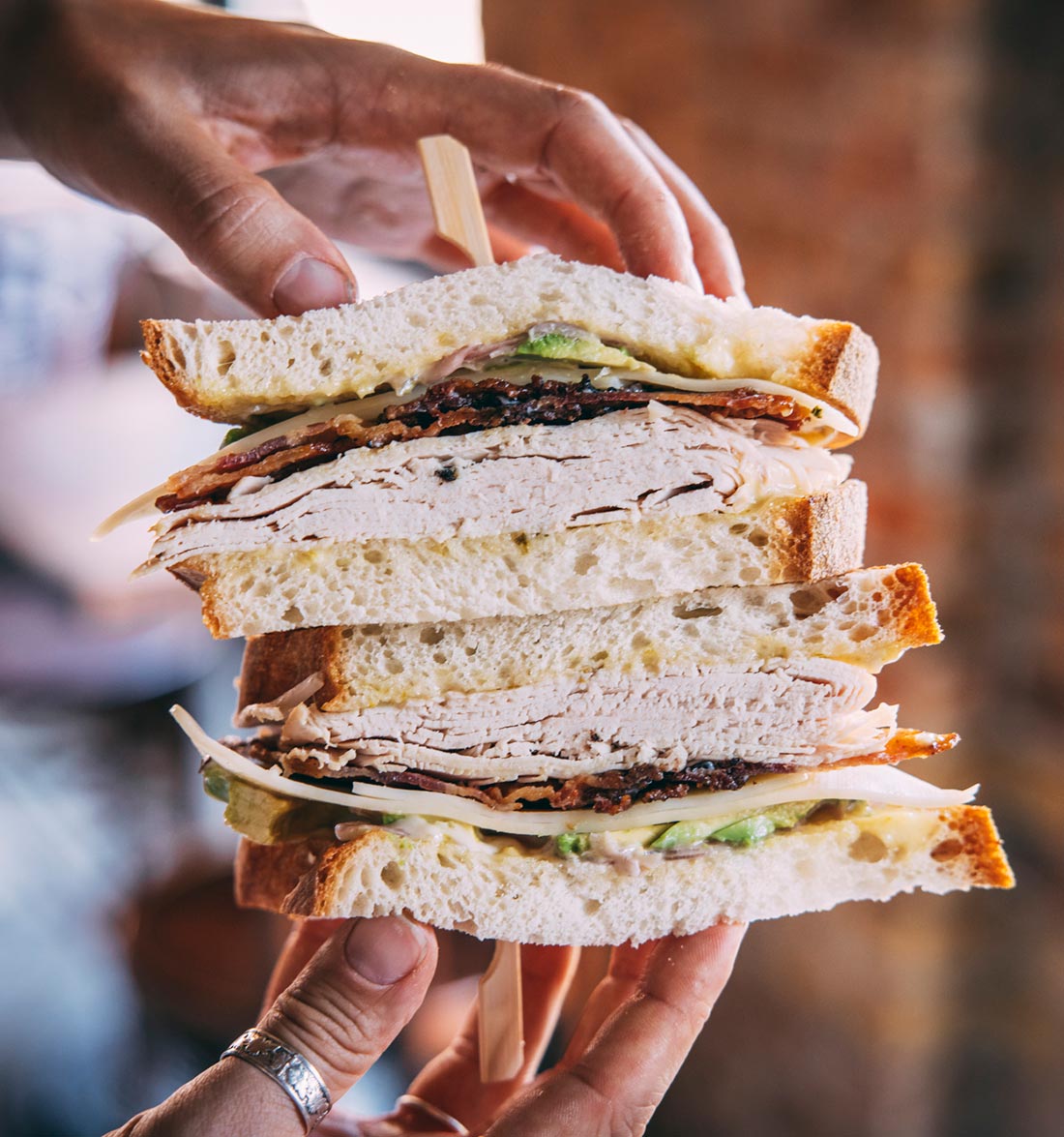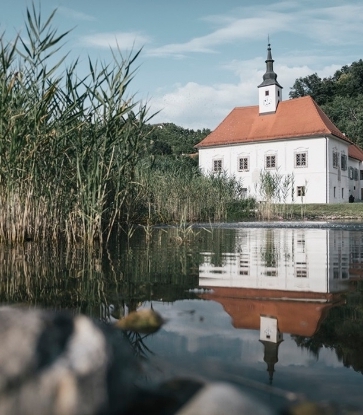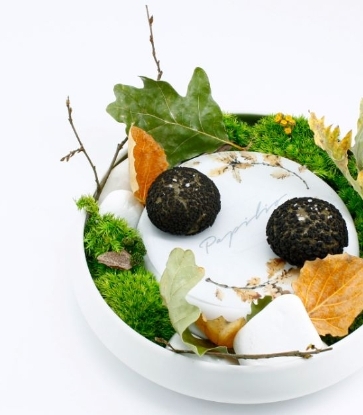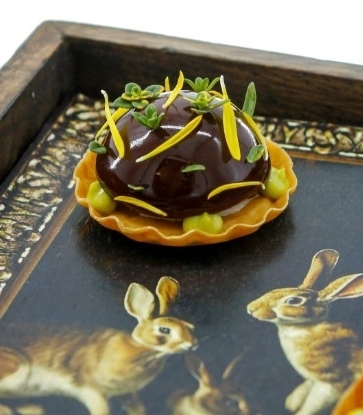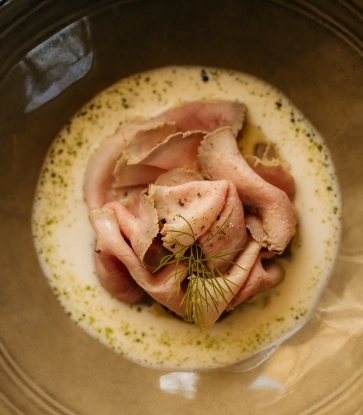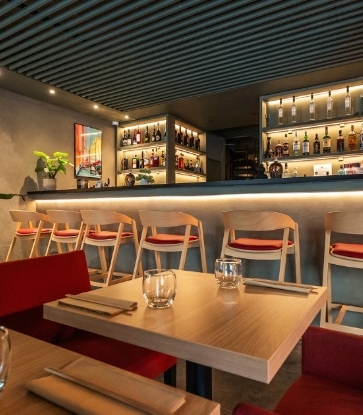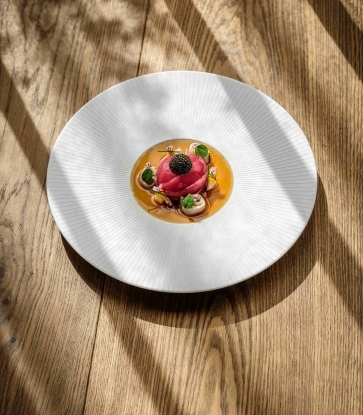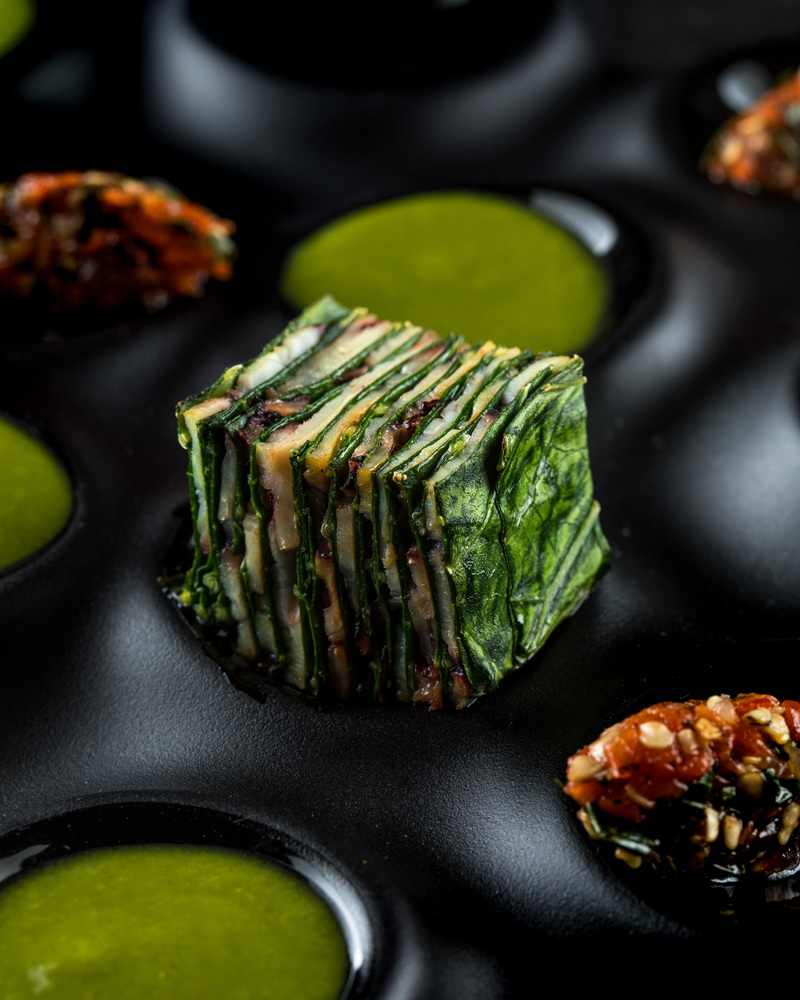These mountain regions are now a place of innovative experimentation, where different ingredients work together and traditional memories of the past combine successfully with the trends of the future. This process featuring time-honoured ingredients and a new vision has given rise to a new unmissable restaurant (and chef!) in the rocky Kranjska Gora Alps.
Milka: a new culinary vision in the mountains
The cuisine served at Milka is revolutionary: David Žefran has had a major influence here, creating tempting dishes in a delightful “boutique experience hotel” which occupies a restored building transformed into a charming and welcoming space where everything has been carefully designed down to the tiniest detail.
This change took place in 2020, a challenging period at the height of the pandemic, when investor joined forces with chef David Žefran and hotel manager Dino Katalenić, who arrived here after travelling the world for 16 years, gaining experience in different countries. At the same time, Žefran brought with him an innate passion for contemporary cuisine – an interest that developed at a relatively late age, including a particularly formative period spent in Stockholm where he came into direct contact with Scandinavian culinary trends, which in many ways have much in common with contemporary Alpine cuisine. Fermented ingredients are a case in point. According to the restaurant, “these are prepared in line with Nordic principles, but using the best Slovenian ingredients. In any case, fermentation is an age-old tradition which can be found throughout Europe – you only have to think of ‘garum’, a fermented fish sauce made by the Ancient Romans. However, what is undeniable is that research and experimentation carried out by chefs such as René Redzepi at Noma in Copenhagen have made a huge difference, creating new opportunities and showing the way ahead”.
A fast-track career leading to a Michelin star
Following a year of hard work before the opening and only three months since it first opened, the restaurant was awarded its first Michelin star in 2022. David Žefran has worked his way up the ranks, from the time he spent cooking burgers in Ljubljana. Following this successful start, he continued to learn and grow, travelled abroad and then, because of the lockdown, came home and started his new venture in Kranjska Gora.
Guests eat well (very well!) at Milka, where seasonal produce is of the utmost importance and where much of the focus is on vegetables and freshwater fish. In spring, lamb makes an appearance on a vibrant menu which carefully demonstrates its support for local producers. One of the restaurant’s key philosophies states that “engaging responsibly with society and the environment is much more than simply choosing our suppliers carefully – this philosophy underpins every aspect of our gastronomic experience”. This is why the restaurant chose to work with Slovenian artisans to create ceramics made from the minerals found around Lake Jasna as well as the restaurant’s wooden dishes and utensils, while the chef has designed the dining room himself, right down to the smallest decorative detail.

Dining at Milka
The menu also features excellent bread, which has a brioche-like dough and is glazed with fermented mushrooms. Made to be shared at the table, it is full of contrasting textures with a soft yet dense dough and a crispy crust and is the perfect accompaniment to the Slovenian wines (many of which are natural) served with your meal. Dishes here include a spelt risotto with mushroom carpaccio and Tolminc cheese and unusual combinations such as beetroot, bear and caviar; langoustine with buckwheat and fermented tomato; and trout garum with juniper.
Cuisine, snow and nature
Good cuisine is often rooted in a particular place, which in this case is very special indeed – in this part of Slovenia you can travel from the snowy Alps to the Adriatic coast in the same day, while Kranjska Gora is also strongly influenced by its proximity to both Austria and Italy. In addition, the region boasts stunning scenery and is the perfect winter sports destination: as an example, it hosts the Vitranc, one of the annual Alpine Ski World Cup events, including giant slalom and men’s slalom races. Tourists flock to Kranjska Gora throughout the year, drawn by the region’s natural beauty and the long walks and treks in the nearby mountains or the Krnica valley, while visitors looking for unspoilt natural landscapes can explore Slovenia’s only national park, the Triglav, which lies just south of this town surrounded by the Martuljek mountains.
Illustration image: Manca Jevšček - Milka




